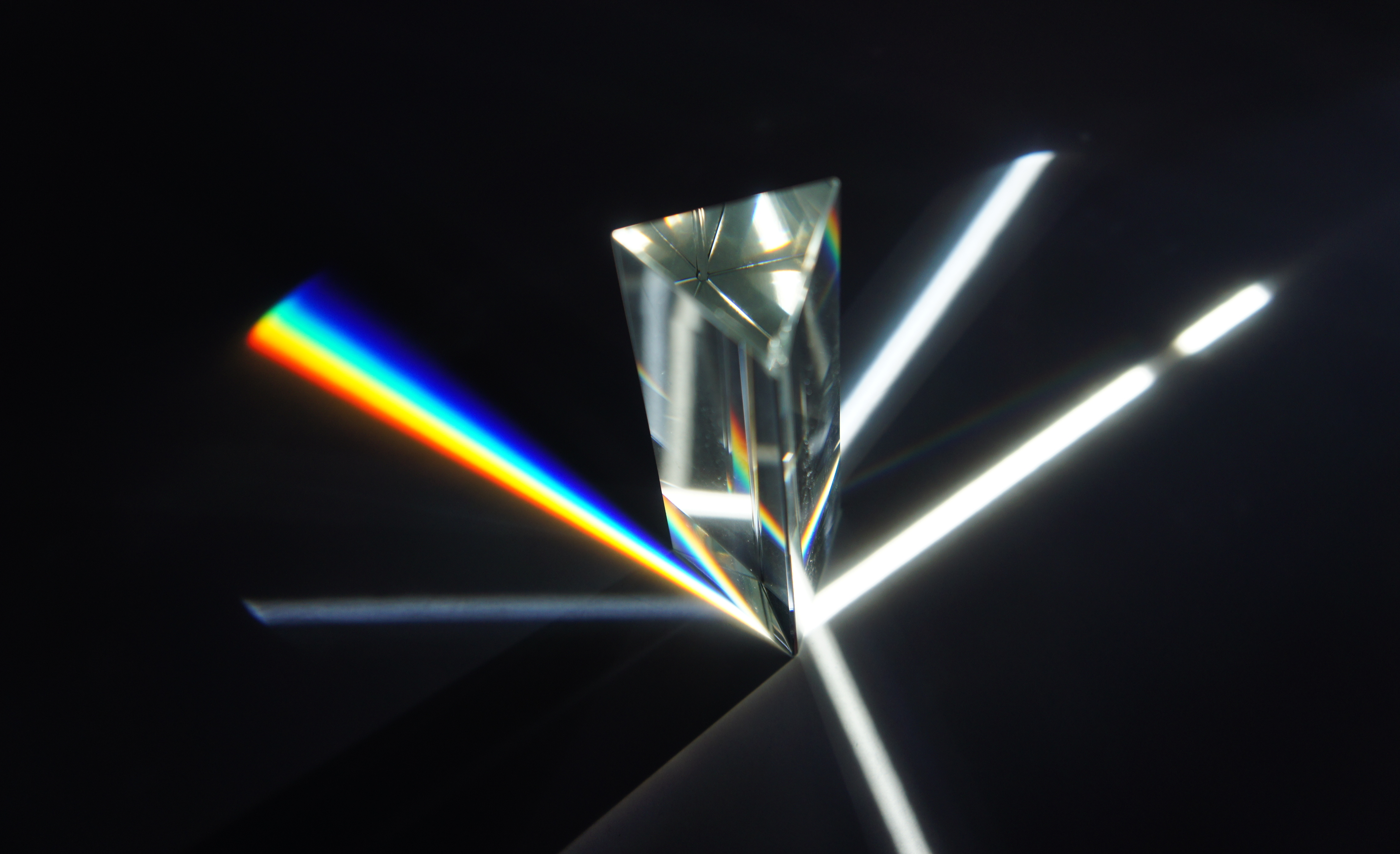|
Optical Train
An optical train, also called an optical assembly, is an arrangement of optical components (e.g. lenses, mirrors, prisms) to guide a line of sight and/or a laser beam. For example, the position and angle of lenses may be adjusted to guide a laser through the path required. Optical instruments like microscopes, telescopes, and DSLRs all have optical trains that guide the incoming light towards a detector or the eye of an observer. The optical train of a telescope is commonly called an optical tube assembly (OTA) or simply an optical tube. References See also * Optical path Optical path (OP) is the trajectory that a light ray follows as it propagates through an optical medium. The geometrical optical-path length or simply geometrical path length (GPD) is the length of a segment in a given OP, i.e., the Euclidean dis ... {{optics-stub Optical devices ... [...More Info...] [...Related Items...] OR: [Wikipedia] [Google] [Baidu] |
Lens
A lens is a transmissive optical device that focuses or disperses a light beam by means of refraction. A simple lens consists of a single piece of transparent material, while a compound lens consists of several simple lenses (''elements''), usually arranged along a common axis. Lenses are made from materials such as glass or plastic and are ground, polished, or molded to the required shape. A lens can focus light to form an image, unlike a prism, which refracts light without focusing. Devices that similarly focus or disperse waves and radiation other than visible light are also called "lenses", such as microwave lenses, electron lenses, acoustic lenses, or explosive lenses. Lenses are used in various imaging devices such as telescopes, binoculars, and cameras. They are also used as visual aids in glasses to correct defects of vision such as myopia and hypermetropia. History The word '' lens'' comes from , the Latin name of the lentil (a seed of a lentil p ... [...More Info...] [...Related Items...] OR: [Wikipedia] [Google] [Baidu] |
Mirror
A mirror, also known as a looking glass, is an object that Reflection (physics), reflects an image. Light that bounces off a mirror forms an image of whatever is in front of it, which is then focused through the lens of the eye or a camera. Mirrors reverse the direction of light at an angle equal to its incidence. This allows the viewer to see themselves or objects behind them, or even objects that are at an angle from them but out of their field of view, such as around a corner. Natural mirrors have existed since Prehistory, prehistoric times, such as the surface of water, but people have been manufacturing mirrors out of a variety of materials for thousands of years, like stone, metals, and glass. In modern mirrors, metals like silver or aluminium are often used due to their high reflectivity, applied as a thin coating on glass because of its naturally smooth and very Hardness (materials science), hard surface. A mirror is a Wave (physics), wave reflector. Light consists ... [...More Info...] [...Related Items...] OR: [Wikipedia] [Google] [Baidu] |
Prism (optics)
An optical prism is a transparent optical element with flat, polished surfaces that are designed to refract light. At least one surface must be angled—elements with two parallel surfaces are ''not'' prisms. The most familiar type of optical prism is the triangular prism, which has a triangular base and rectangular sides. Not all optical prisms are geometric prisms, and not all geometric prisms would count as an optical prism. Prisms can be made from any material that is transparent to the wavelengths for which they are designed. Typical materials include glass, acrylic and fluorite. A dispersive prism can be used to break white light up into its constituent spectral colors (the colors of the rainbow) to form a spectrum as described in the following section. Other types of prisms noted below can be used to reflect light, or to split light into components with different polarizations. Types Dispersive ''Dispersive prisms'' are used to break up light into its ... [...More Info...] [...Related Items...] OR: [Wikipedia] [Google] [Baidu] |
Sightline
The line of sight, also known as visual axis or sightline (also sight line), is an imaginary line between a viewer/observation, observer/wikt:spectator, spectator's eye(s) and a subject of interest, or their relative direction (geometry), relative direction. The subject may be any definable object taken note of or to be taken note of by the observer, at any distance more than least distance of distinct vision. In optics, refraction of a ray due to use of lenses can cause Distortion (optics), distortion. Shadows, patterns and movement can also influence line of sight interpretation (as in optical illusions). The term "line" typically presumes that the light by which the observed object is seen travels as a straight ray (optics), ray, which is sometimes not the case as light can take a curved/angulated path when reflection (physics), reflected from a mirror, refracted by a lens or density changes in the optical medium, traversed media, or gravitational lens, deflected by a gravitatio ... [...More Info...] [...Related Items...] OR: [Wikipedia] [Google] [Baidu] |
Laser
A laser is a device that emits light through a process of optical amplification based on the stimulated emission of electromagnetic radiation. The word ''laser'' originated as an acronym for light amplification by stimulated emission of radiation. The first laser was built in 1960 by Theodore Maiman at Hughes Research Laboratories, based on theoretical work by Charles H. Townes and Arthur Leonard Schawlow and the optical amplifier patented by Gordon Gould. A laser differs from other sources of light in that it emits light that is coherence (physics), ''coherent''. Spatial coherence allows a laser to be focused to a tight spot, enabling uses such as optical communication, laser cutting, and Photolithography#Light sources, lithography. It also allows a laser beam to stay narrow over great distances (collimated light, collimation), used in laser pointers, lidar, and free-space optical communication. Lasers can also have high temporal coherence, which permits them to emit light ... [...More Info...] [...Related Items...] OR: [Wikipedia] [Google] [Baidu] |
Optical Instrument
An optical instrument is a device that processes light waves (or photons), either to enhance an image for viewing or to analyze and determine their characteristic properties. Common examples include periscopes, microscopes, telescopes, and cameras. Image enhancement The first optical instruments were telescopes used for magnification of distant images, and microscopes used for magnifying very tiny images. Since the days of Galileo and Van Leeuwenhoek, these instruments have been greatly improved and extended into other portions of the electromagnetic spectrum. The binocular device is a generally compact instrument for both eyes designed for mobile use. A camera could be considered a type of optical instrument, with the pinhole camera and camera obscura being very simple examples of such devices. Analysis Another class of optical instrument is used to analyze the properties of light or optical materials. They include: * Interferometer for measuring the interference propertie ... [...More Info...] [...Related Items...] OR: [Wikipedia] [Google] [Baidu] |
Optical Microscope
The optical microscope, also referred to as a light microscope, is a type of microscope that commonly uses visible light and a system of lenses to generate magnified images of small objects. Optical microscopes are the oldest design of microscope and were possibly invented in their present compound form in the 17th century. Basic optical microscopes can be very simple, although many complex designs aim to improve resolution and sample contrast. The object is placed on a stage and may be directly viewed through one or two eyepieces on the microscope. In high-power microscopes, both eyepieces typically show the same image, but with a stereo microscope, slightly different images are used to create a 3-D effect. A camera is typically used to capture the image (micrograph). The sample can be lit in a variety of ways. Transparent objects can be lit from below and solid objects can be lit with light coming through ( bright field) or around ( dark field) the objective lens. Polar ... [...More Info...] [...Related Items...] OR: [Wikipedia] [Google] [Baidu] |
Optical Telescope
An optical telescope gathers and focus (optics), focuses light mainly from the visible spectrum, visible part of the electromagnetic spectrum, to create a magnification, magnified image for direct visual inspection, to make a photograph, or to collect data through electronic image sensors. There are three primary types of optical telescope : * ''Refracting telescopes'', which use lens (optics), lenses and less commonly also Prism (optics), prisms (dioptrics) * ''Reflecting telescopes'', which use mirrors (catoptrics) * ''Catadioptric system#Catadioptric telescopes, Catadioptric telescopes'', which combine lenses and mirrors An optical telescope's ability to resolve small details is directly related to the diameter (or aperture) of its objective (optics), objective (the primary lens or mirror that collects and focuses the light), and its light-gathering power is related to the area of the objective. The larger the objective, the more light the telescope collects and the finer det ... [...More Info...] [...Related Items...] OR: [Wikipedia] [Google] [Baidu] |
DSLR
A digital single-lens reflex camera (digital SLR or DSLR) is a digital camera that combines the optics and mechanisms of a single-lens reflex camera with a solid-state image sensor and digitally records the images from the sensor. The reflex design scheme is the primary difference between a DSLR and other digital cameras. In the reflex design, light travels through the lens and then to a mirror that alternates to send the image to either a prism, which shows the image in the optical viewfinder, or the image sensor when the shutter release button is pressed. The viewfinder of a DSLR presents an image that will not differ substantially from what is captured by the camera's sensor, as it presents it as a direct optical view through the main camera lens rather than showing an image through a separate secondary lens. DSLRs largely replaced film-based SLRs during the 2000s. Major camera manufacturers began to transition their product lines away from DSLR cameras to mirrorless interc ... [...More Info...] [...Related Items...] OR: [Wikipedia] [Google] [Baidu] |
Optical Path
Optical path (OP) is the trajectory that a light ray follows as it propagates through an optical medium. The geometrical optical-path length or simply geometrical path length (GPD) is the length of a segment in a given OP, i.e., the Euclidean distance integrated along a ray between any two points. The mechanical length of an optical device can be reduced to less than the GPD by using folded optics. The '' optical path length'' in a homogeneous medium is the GPD multiplied by the refractive index of the medium. Factors affecting optical path Path of light in medium, or between two media is affected by the following: * Reflection ** Total internal reflection * Refraction * Dispersion of light * Absorption Simple materials used * Lenses * Prisms * Mirror A mirror, also known as a looking glass, is an object that Reflection (physics), reflects an image. Light that bounces off a mirror forms an image of whatever is in front of it, which is then focused through the lens ... [...More Info...] [...Related Items...] OR: [Wikipedia] [Google] [Baidu] |





